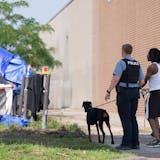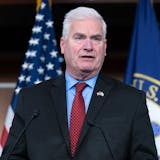FORT MYERS, Fla. – For Twins pitchers and catchers, Wednesday was the final day of winter. For the Twins' burgeoning technology department, Wednesday was the first day of a new era.
The bullpens at Hammond Stadium were teeming with team employees on the eve of the first workout of spring training, but they weren't pitchers honing their sliders. Instead, the club's research and development experts were busy installing ultra-high-speed cameras and radar devices, trained on the mounds where the pitching staff will begin work Thursday.
The Twins are one of several teams to invest thousands of dollars in new technology to document players' every move — on the mound, at the plate and in the field. The Edgertronic cameras, now installed behind two bullpen mounds, provide high-resolution video taken at 500 frames or more per second, slowing down motion that is impossible to see with a naked eye, right down to the fingertips as a pitch is released. Rapsodo radar devices, such as the Trackman systems that provide data for MLB's Statcast reports in major league parks, measure the velocity, spin rate and movement angle of every pitch, providing instant data for analysis.
The same systems can be used on hitters' swings, catchers' receptions and fielders' movements, too, giving players, coaches and front-office analysts an avalanche of information.
"All of these tools, they're for assessment analysis and getting baselines and then understanding where a guy is," said chief baseball officer Derek Falvey, who has made expansion of the Twins' analytics department one of his priorities. Those technologies "will sometimes tell you, here's how a guy is spinning, here's what it looked like, here's how it looked last year."
The Twins will use that information to help players make adjustments or spot mistakes they might not realize they are making. It also gives the team's analysts data to explore new techniques or ideas.
"Maybe we'll see a guy has misaligned his slider grip, or maybe there's something going on with the way his foot strikes, and where his arm is," Falvey said. "All that gets into the weeds a little bit, but it's specific to how we'll coach guys."
Astudillo delayed
Every pitcher and catcher reported as expected and underwent a complete physical exam Wednesday. Except one.

